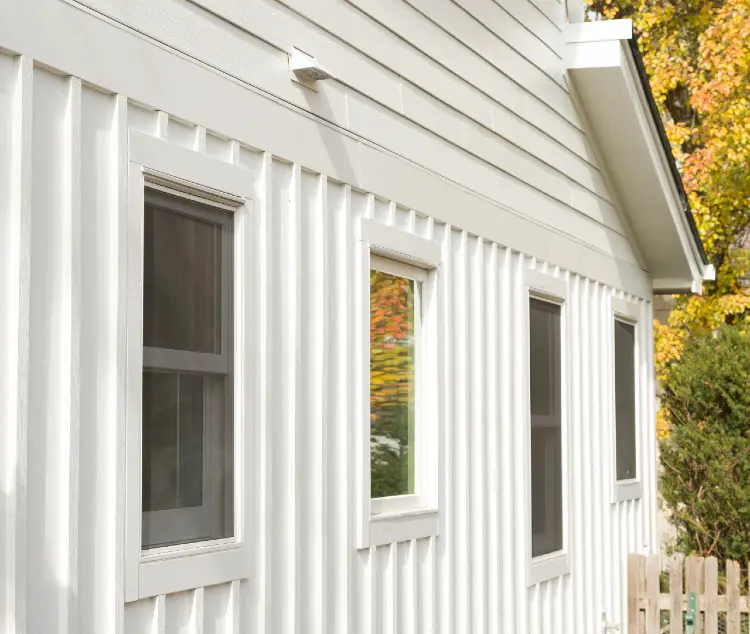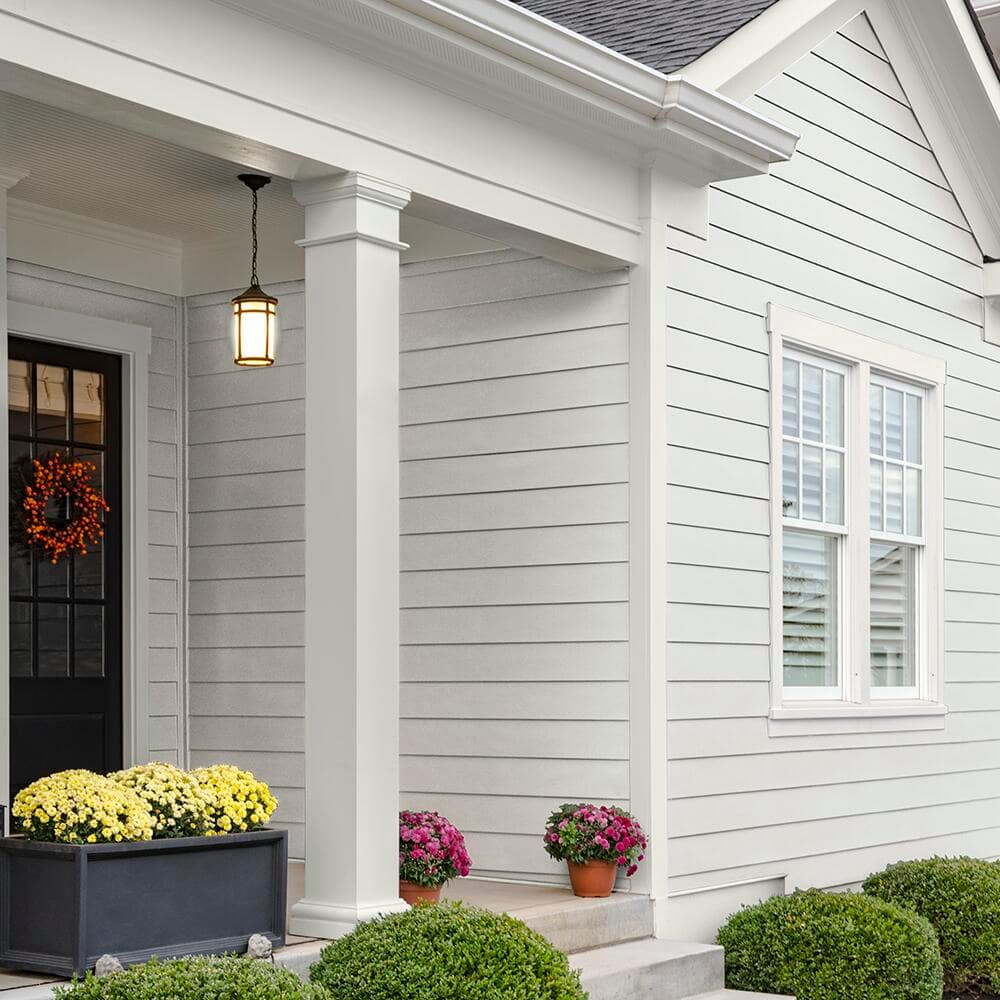Siding repair Baltimore MD: Selecting the Best Siding Material for Your Home
Exterior renovation contractors: Exterior Cladding Can Considerably Boost The Appearance And Defense Of Your Home
Checking out the Spectrum of Siding Products
When it pertains to siding, the choices can feel like a maze. Each product carries its own personality, efficiency quirks, and beauty. Ever questioned why some homes boast that rustic wood attraction while others shine with smooth vinyl panels? Let's peel back the layers and dive into the most popular siding choices that form our neighborhoods.
Wood Siding: The Timeless Storyteller
Wood has a nearly poetic connection with homes; it ages like fine white wine, gaining character through the seasons. However beware, the love of wood demands attention. It's vulnerable to wetness and pests, so regular upkeep is the rate of admission. The warmth and texture it imparts? Irreplaceable.
Vinyl Siding: The Chameleon of Exteriors
If flexibility had a poster child, vinyl siding would be it. This material comes in a rainbow of colors and textures, mimicking wood, stone, or perhaps brick with unexpected fidelity. It's low-maintenance, long lasting, and resistant to fading-- ideal for homeowners who choose to spend weekends checking out instead of scraping paint.
Fiber Cement: The Quiet Strength
Fiber cement often flies under the radar however packs a punch. Composed of sand, cement, and cellulose fibers, it withstands fire, insects, and rot. Imagine a siding that appears like wood however chuckles in the face of termites and weather condition. It's a preferred among those who look for durability without compromising aesthetics.
Metal Siding: The Modern Minimalist
Aluminum and steel siding have actually risen in appeal, especially for modern homes. Their sleek lines and reflective surface areas use a modern twist. Plus, metal siding can shake off damages and scratches better than you 'd anticipate. Curious about a siding that's both industrial and welcoming? Metal may be your response.
Other Noteworthy Products
- Stucco: Perfect for Mediterranean vibes, it offers a textured finish that's both long lasting and energy-efficient.
- Brick Veneer: An ageless option, delivering durable security with traditional charm.
- Engineered Wood: Combines the beauty of wood with enhanced resistance to decay.

Contrast Table of Common Siding Types
| Material | Sturdiness | Upkeep | Look | Cost Performance |
|---|---|---|---|---|
| Wood | Moderate | High | Natural, warm | Medium |
| Vinyl | High | Low | Varies widely | High |
| Fiber Cement | Very High | Low | Wood-like | Medium |
| Metal | High | Low | Modern, sleek | Medium |
| Stucco | High | Medium | Textured | Medium |
Choosing the best siding typically boils down to a blend of individual taste and practical needs. Your home's exterior isn't simply about protection-- it's a canvas reflecting your distinct story. So, what does your siding state about you?
Mastering the Art of Siding Installation
Ever observed how a home's outside can either whisper or scream its personality? The installation techniques behind siding hold the trick to that subtle or bold statement. When it pertains to siding, precision is non-negotiable; a single misaligned slab can welcome wetness or let cold drafts slip in, undermining years of effort.
Preparation: The Unsung Hero
Before the very first nail strikes the wood or vinyl, understanding the substrate is vital. Is the sheathing level!.?. !? Exist spaces behind the old siding that could trap water? Neglecting these information typically leads to warping or early degeneration. An experienced installer will always:
- Inspect and fix the sheathing surface area.
- Set up a top quality weather-resistant barrier to combat wetness infiltration.
- Think about including furring strips for improved airflow in cases of irregular walls.
Nailing Strategies: More Than Simply Hammer and Nail
One may believe that nailing is simple-- hit the slab, secure it, done. But each siding product requires a special technique. For example, wood siding needs nails long enough to penetrate the sheathing but not so deep that they split the plank. Vinyl, on the other hand, requires a fragile balance; nails should permit expansion and contraction to avoid buckling.
Here's a quick rundown of professional nailing suggestions:
- Use galvanized or stainless-steel nails to withstand rust.
- Leave a minor space in between nail head and siding surface to accommodate movement.
- Area nails evenly-- too close and the siding can split; too far and it may loosen.
Joint Methods and Overlaps
Seams can be the Achilles' heel of siding setup. Have you ever seen siding panels that appear like they're slowly removing? Often, it is because of improper overlapping or improperly sealed joints. Accepting a shingle-style overlap, where each panel covers the one below by about an inch, creates a natural water-shedding effect.
Pro ideas consist of:
- Stagger seams between courses to minimize water intrusion.
- Usage versatile, paintable caulking moderately to seal corners and joints.
- Guarantee that corner posts are firmly fitted however still enable product movement.
Working with Corners and Trim
Corners aren't simply visual details-- they're tension points. Installing J-channels and corner trims correctly requires persistence and ability. A typical trap is cutting corners too tight, which limits siding expansion and causes warping or bubbling. Allowing a small gap and then sealing with an appropriate trim helps preserve integrity with time.
Advanced Techniques: Beyond the Fundamentals
| Technique | Function | Advantage |
|---|---|---|
| Rain Screen Installation | Produces a ventilated cavity behind siding | Enhances moisture management and extends siding life expectancy |
| Butt Joints with Flashing | Avoids water ingress at panel ends | Improves sturdiness and reduces maintenance |
| Custom Furring Strip Layouts | Ensures even siding surface area on irregular walls | Enhances visual appeals and siding performance |
Have you ever questioned why some siding jobs look flawless for decades, while others reveal wear after a few seasons? The secret lies not just in the products however in the finesse of setup. Every cut, every nail, every overlap informs a story-- a story of craftsmanship, weather-readiness, and attention to detail.
Repair And Maintenance Tips for Siding
When you look at your home's exterior, the siding typically bears the force of time and weather condition. But have you ever stopped briefly to think of what lurks behind that captivating facade? Wetness can sneak in through tiny fractures, turning a small imperfection into a costly headache. That's why regular assessment isn't just excellent practice-- it's necessary.
Imagine this: a little chip in your vinyl siding, relatively insignificant, becomes the entry point for water during a storm. Weeks later on, covert rot festers below, silently deteriorating your home's structure. This is where a specialist's eye and timely action save you from extended damage.
Finding Trouble Early
- Look for staining or warping, which typically signals water infiltration.
- Listen for hollow sounds when tapping the siding; they may reveal loose panels or underlying decay.
- Inspect caulking around doors and windows-- gradually, it can split and compromise the seal.
Many house owners ignore the importance of cleaning their siding. Dirt and mildew don't simply mar the appearance; they accelerate wear. Utilizing a soft brush with a mild cleaning agent keeps surfaces fresh without damaging the material. Prevent high-pressure cleaning unless you understand the siding type can handle it-- otherwise, you run the risk of forcing water behind the panels.
Basic Repair Work That Make a Difference
- Fill small cracks or holes with top quality exterior-grade sealants to avoid water intrusion.
- Change damaged panels promptly to maintain the siding's stability and curb appeal.
- Repaint wood siding every couple of years, however do not simply slap on paint-- sand and prime very first to guarantee long lasting adhesion.
Here's a nugget often overlooked: when repairing, always match the siding's growth residential or commercial properties. Overlooking this can cause panels to buckle or gaps to form later, undoing your efforts.
Seasonal Siding Care
| Season | Maintenance Focus | Pro Tips |
|---|---|---|
| Spring | Inspect for winter season damage; tidy mildew | Use a vinegar option for mildew removal-- eco-friendly and reliable |
| Summertime | Inspect and fix caulking; repaint if needed | Paint during mild temperatures to avoid fast drying and splitting |
| Fall | Clear gutters to prevent water damage | Cut trees to prevent branches scraping siding during winter season storms |
| Winter season | Display for ice dams and snow buildup | Usage gentle snow removal tools; avoid sharp things |

Ever questioned why some siding lasts years while others falter rapidly? The response often lies in the subtle subtleties of upkeep. It's not almost reacting to noticeable defects however expecting how your home's environment will engage with its exterior. By mastering these repair work and maintenance strategies, you change siding from a mere protective shell into a lasting architectural possession.
Ecological Effect and Sustainability
When thinking about siding, the concern isn't just how it looks or lasts-- it's how it copes with the planet. Have you ever stopped briefly to believe about the ripple impact your choice of outside material has on the environment? The manufacturing process alone might surprise you. Standard vinyl siding, while popular for its toughness and low maintenance, typically includes petrochemical derivatives that remain in communities long after disposal.
Wood siding, on the other hand, offers an eco-friendly resource, but it's not without its own environmental footprint. The carbon cost of gathering old-growth trees and the energy utilized in treatment and transportation can be substantial. Yet, when sourced properly, wood acts like a carbon sink, locking away CO2 rather than releasing it.
Sustainability Metrics to Think About
- Embodied energy: The overall energy taken in during extraction, production, and setup.
- Durability and upkeep frequency: How frequently will the siding need repairs or replacement?
- End-of-life recyclability: Can the product be repurposed or does it end up in land fill?
- Thermal efficiency: Does the siding contribute to energy efficiency, reducing heating and cooling demands?
Let's not neglect the frequently ignored impact of siding color and finish. Lighter shades reflect sunshine, lowering heat absorption and reducing cooling costs read more in warmer climates. Darker siding may increase energy loads however can be useful in colder regions seeking passive solar gain.
Specialist Tips for Eco-Friendly Siding Choices
- Go with siding made from recycled material whenever possible; it decreases need for virgin products.
- Search for items with third-party sustainability accreditations to validate environmental claims.
- Consider fiber cement siding, which blends cement, sand, and cellulose fibers-- offering durability with less environmental toll than vinyl.
- Guarantee appropriate insulation below siding to maximize energy efficiency, as siding alone isn't a thermal barrier.
- Keep your siding frequently; a well-kept exterior extends life-span and hold-ups replacement.
Keep in mind the old farmhouse down the lane? Its weathered cedar siding has meant over a century due to the fact that it was crafted from locally sourced timber and preserved with care, showing that sustainability isn't simply about new innovation-- it's about regard for products and environment. Could siding choices today echo that durability and environmental mindfulness?